
The Art During the 1870s
As history approached the 1870's, people who believed that art was just a different variation of art styles, all following the framework, theories, and principles of Romanticism and Neoclassicism, witnessed a gradual surge of art styles that didn't follow the touchstone and thus were rejected by critics. Impressionism and Realism, two of the most significant art movements in history, were conceived and practiced during this period they call the "Positivist Age", the age of faith in all knowledge to gain the ability of solving all human problems. In Impressionism, landscapes and scenes from daily life were often used to objectively record nature through the sensation in the eye that views the subject, whereas in Realism, artists attempted to portray the lives, appearances, problems and customs of the middle and lower classes, the ordinary people, the humble, the ugly and common subjects normally associated with a social, political, or as a moral message sometimes through the material objects used during that time. Because of their defiance against the traditional and formal artistic theory of Romanticism and Neoclassicism, the founders of these movements inspired many 1870's artists such as Winslow Homer, Thomas Eakins, William Harnett, James Whistler and Mary Cassatt to explore in other types of art without worrying about what the common and radical society would think. Among these artists were two American realists, William Harnett and Thomas Eakins, who were influential in the development of many later art styles. These artists used their own style of art in depicting human nature and common material objects. Throughout the course of their lives, they had felt success and fulfillment in experimenting and practicing their own types of styles which will later on make Harnett his era's leading tromp l'oeil still life painter and Eakins as the strongest, most profound realist in the 19 th to early 20 th century American Art.
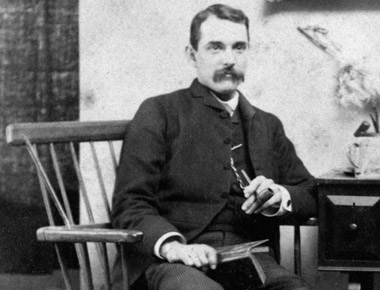
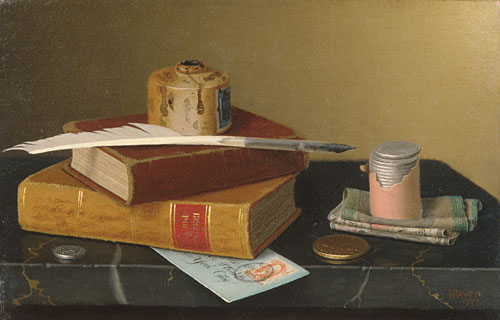
William Harnett was born on August 10, 1848 in County Cork, Ireland and was moved to Philadelphia with his family when he was still young. As he grew up, he learned and developed engraving skills and became an engraver of silverware. Because of an interest inside him to study painting, when they moved to New York, he worked for jewelry shops during the day and studied painting at the National Academy of Design at night. He was determined to become a painter and was single-minded to stay with it all his life. Harnett returned to Europe, and his works were appreciated by Europeans and many other people because of their appeal, captivating beauty, and interesting subjects. He practiced tromp l'oeil, seeking to "fool the eye" and to be close to visual reality. One outstanding characteristic of his artworks is that he chose a part of his subject(s) and painted it in a way that it seemed to project out of the painting. Critics referred to this as one of his "compositional tricks". His artworks looked so real that people tried to pick up the dollar bills he painted. Historians say that Harnett's art was undoubtedly influenced by Raphael Peale, his Philadelphia predecessor, and the types of still-lifes he had seen abroad. Some of his paintings were intended to symbolize death and passage of life to remind the viewers of their own mortality. Examples of this were shown in The Banker's Table (1877), Memento Mori(1879), and Munich Still Life(1882). In his artwork, great meticulousness in showing textures was cleverly obvious. This somehow revealed his determination and commitment to art and his still-life paintings, no wonder he was titled as his era's leading tromp l'oeil still-life painter. He transformed his ideas and sensations into paintings that made depicting reality absolutely possible. On his death on Oct. 29, 1892, he left artworks that he never imagined would evolve into more branches of art styles, would influence artists of every succeeding generations, and would help viewers understand the kind of life in the past.
Another important artist during the decade of the 1870's was Thomas Eakins. He was born on July 25, 1844 in Philadelphia. Unlike Harnett, Eakins' style wasn't influenced by that of any other artists. He strived to become honest in depicting the reality as seen through his eyes. It was his burden to understand and to show a deeper view of American life. He based his styles on his country's everyday scenes. Some examples of the simplicity of his subjects were shown in his artworks such as the Starting Out After Rail (1874), The Biglin Brothers Racing (1873), and Baseball Players Practicing (1875). He faced a lot of criticisms, but the worst issue of his art life was yet to come. The Academy of Fine Arts, where he was working as an art professor, rejected Eakins' paintings of nude people. Eakins innocently viewed body with scientific objectivity and without any malicious ideas. He was not bothered by appearing nude in front of the class. He even encouraged his class and other people to pose nude for his paintings. He wanted to encourage the students to open their minds to ideas of the beauty and unique qualities of human form. Another distinct characteristic some of Eakins' works had was his style of meticulousness in depicting human faces, which was frequently compared and likened to those of Rembrandt because of the dramatic display of an individual's inner truth. Unlike some artists, Eakins had his interesting opinions and point of view of things. He strongly believed that a person's face perfectly reflects his/her personality. Despite the rejections he encountered along the way, he was never dismayed on continuing his career. He continued painting outdoors and enjoyed what he's doing until his death on July 25, 1916. His controversial and spectacular artworks defined him as the strongest, most profound realist in the 19 th to early 20 th century American Art.
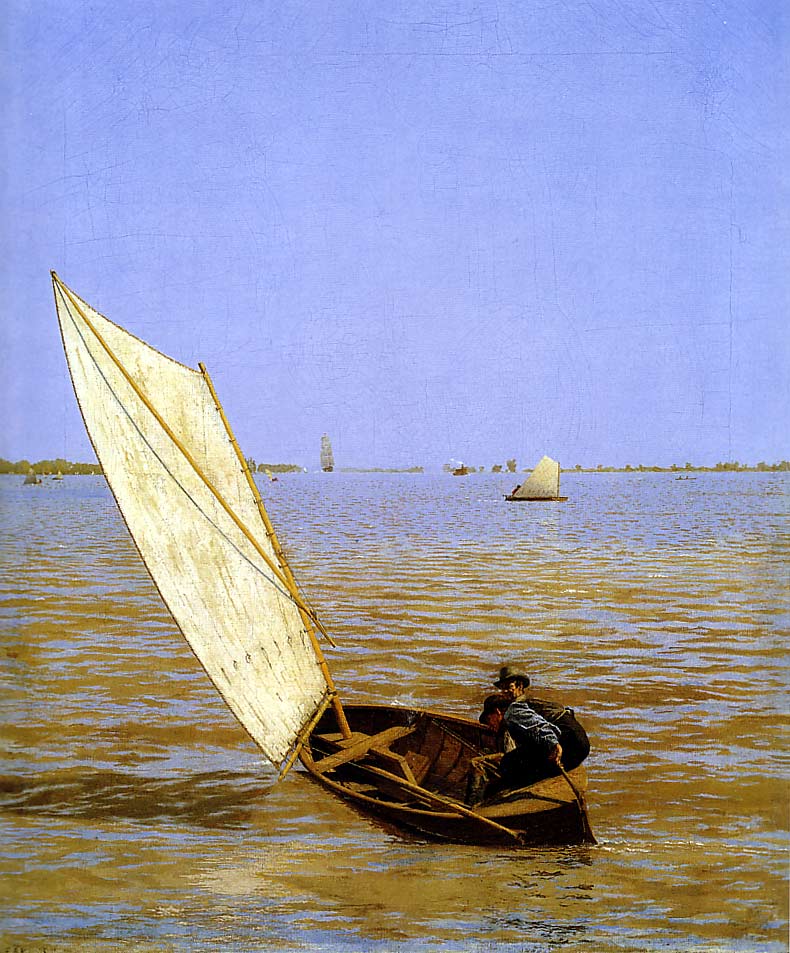
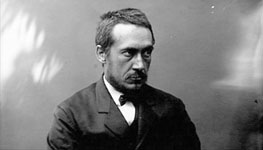
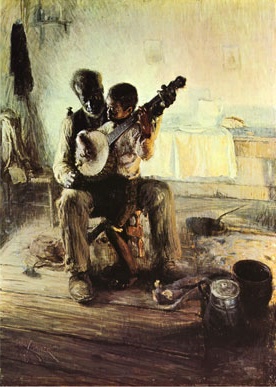
Art is not only about visual arts. In terms of music, America during the late 19th century also produced myriad musical styles such as jigs, folk songs, Christian, and gospel songs. After the American Civil War which resulted to the abolishment of slavery, African American folk musical techniques and instruments became a huge part of mainstream American music. It includes slave songs, church songs, spiritual songs, while blues, jazz, rhythm and blues, rock and roll, soul, hip hop and country music were considered later on. Popular subjects of 1870s songs also included the technological advancements, women's suffrage, temperance, home, family, mother, love and death. Instruments such as banjo, of African origin, were greatly enjoyed during this period. Later on, many forms of music and other types of American art would be influenced by other nations as immigration after the American Civil War continued to surge throughout the United States.
The art and artists of the 1870's influenced the art of today. Thomas Eakins and William Harnett were only two of the innumerable American artists of the 1870's who showed through their lives as artists that nothing is impossible for a committed and hardworking man. Despite the devastating effects of the civil war, Americans were able to stand up and to move on in improving various aspects of the society. Artists, in addition, played a major role in inspiring them with each of their own unique qualities of expressing social, political and moral messages through their artworks. Artists were an indispensable part of the society during that time of America's reconstruction. It was their hardwork, creativity, and enthusiastic endeavor that paved the way for the number of art styles to emerge, to lift up people's artistic side, and to develop a better individual within every artists, within every Americans.
Sources:
"HuntFor". 4 Oct. 2007 <http://www.huntfor.com/arthistory/c19th/realism.htm>.
Vigue, Jordi. Great Masters of American Art. Broadway: Watson-Guptill Publication, 2004.
"Wikipedia, The Free Encyclopedia". 9 Oct. 2007<http://en.wikipedia.org/wiki/William_Harnett>.
"Wikipedia, The Free Encyclopedia". 4 Oct. 2007<http://en.wikipedia.org/wiki/Thomas_Eakins>.
"Wikipedia, The Free Encyclopedia". 9 Oct. 2007<http://en.wikipedia.org/wiki/African_American_music#19th_century>.
"Wikipedia, The Free Encyclopedia". 8 Oct. 2007<http://en.wikipedia.org/wiki/Impressionism>.